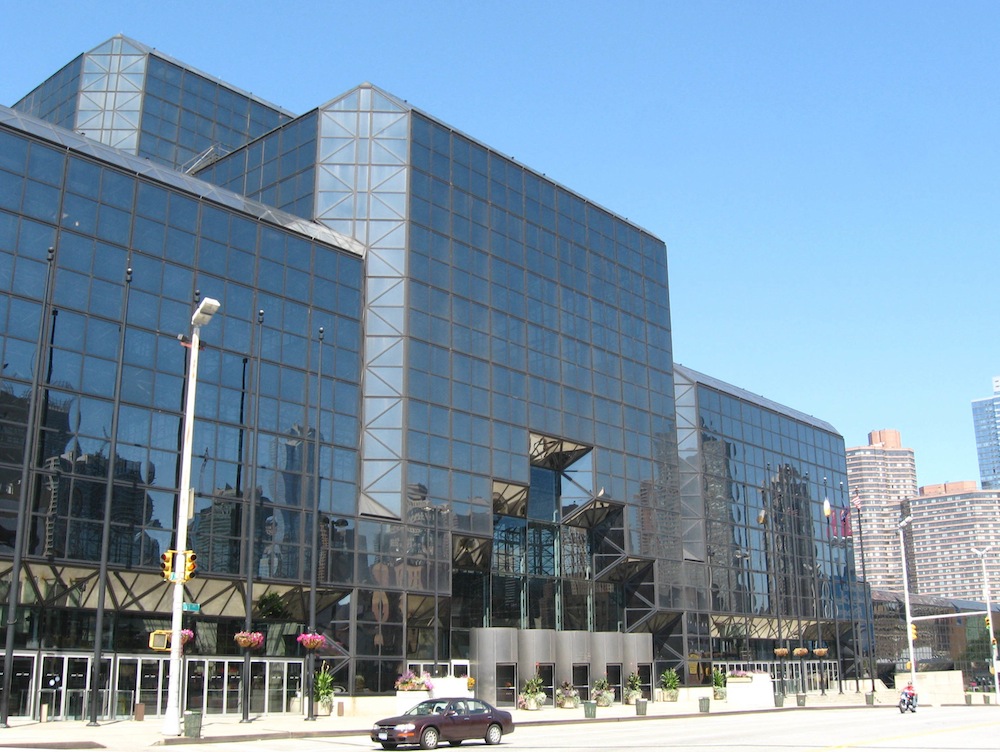The last recession isn’t over yet, at least as far as the glass products are concerned.
Glass manufacturers, which shut 11 of 47 float-glass North American plants between 2007 and 2014, are now playing catch-up with demand from commercial builders whose business is robust. The Wall Street Journal reports that glass prices have risen by more than 30% over the past 18 months. Construction projects are being delayed because they can’t get the glass they need, especially for curtain wall, the metal-framed glass panels that have become popular design components for skyscrapers, airport terminals, hotels, and many other nonresidential buildings.
“The glass guys are dictating the timetables of a project to us,” Ralph Esposito, who oversees Lend Lease’s commercial construction in New York, tells the Journal. AvalonBay Communities have seen glass prices rise by 35% to 45% from 2013, and expects this supply-and-demand dilemma to persist through early 2016, says Scott Kinter, its Senior Vice President in Boston.
The Producer Price Index for the broad category “flat glass” in July 2015 stood at 126.6, up 5% from July 2014. The Bureau of Labor Statistics does not adjust this category for seasonality.
Shortages have become so severe that The Related Cos., one of the country’s biggest developers, recently joined forces with M. Cohen & Sons, a specialty metal manufacturer, to open its own glass factory, called New Hudson Façades, in Linwood, Pa. The Journal quotes Bruce Beal, Related’s president, as stating that his firm needs more than 3,000 glass panels for one skyscraper it’s building on Manhattan’s West Side alone.
Demand and price increases for glass aren’t confined to North America, either. Saint-Gobain, one of the world’s leading glass producers, reported a 9.8% increase in flat glass sales, to 2.633 billion Euros (US$2.9 billion), for the first half of 2015, during which the company’s operating income for that category rose 48.1% to 194 million Euros.
Perhaps ironically, last April the Journal also reported how several cities across the country were pulling back on their glass-recycling programs because glass had become too difficult and expensive to handle.
Related Stories
| Sep 13, 2010
Committed to the Core
How a forward-looking city government, a growth-minded university, a developer with vision, and a determined Building Team are breathing life into downtown Phoenix.
| Aug 11, 2010
New data shows low construction prices may soon be coming to an end
New federal data released recently shows sharp increases in the prices of key construction materials like diesel, copper and brass mill shapes likely foreshadow future increases in construction costs, the Associated General Contractors of America said. The new November producer price index (PPI) report from the Bureau of Labor Statistics provide the strongest indication yet that construction prices are heading up, the association noted.
| Aug 11, 2010
Using physical mockups to identify curtain wall design flaws
Part two of a five-part series on diagnosing and avoiding cladding, glazing, and roofing failures from building forensics expert IBA Consultants.
| Aug 11, 2010
Best AEC Firms of 2011/12
Later this year, we will launch Best AEC Firms 2012. We’re looking for firms that create truly positive workplaces for their AEC professionals and support staff. Keep an eye on this page for entry information. +
| Aug 11, 2010
AAMA leads development of BIM standard for fenestration products
The American Architectural Manufacturers Association’s newly formed BIM Task Group met during the AAMA National Fall Conference to discuss the need for an BIM standard for nonresidential fenestration products.
| Aug 11, 2010
NoricF4 custom metal ICF frames receive fire ratings, comply with antiterrorism standards for buildings
Reward Wall Systems' NoricF4 Custom Metal ICF Frames have received fire ratings of 1.5 hours to 3 hours and they have been evaluated to be in compliance with the prescriptive requirements of the Department of Defense Minimum Antiterrorism Standards for Buildings for blast/force protection.
| Aug 11, 2010
AIA Course: Enclosure strategies for better buildings
Sustainability and energy efficiency depend not only on the overall design but also on the building's enclosure system. Whether it's via better air-infiltration control, thermal insulation, and moisture control, or more advanced strategies such as active façades with automated shading and venting or novel enclosure types such as double walls, Building Teams are delivering more efficient, better performing, and healthier building enclosures.
| Aug 11, 2010
Glass Wall Systems Open Up Closed Spaces
Sectioning off large open spaces without making everything feel closed off was the challenge faced by two very different projects—one an upscale food market in Napa Valley, the other a corporate office in Southern California. Movable glass wall systems proved to be the solution in both projects.








